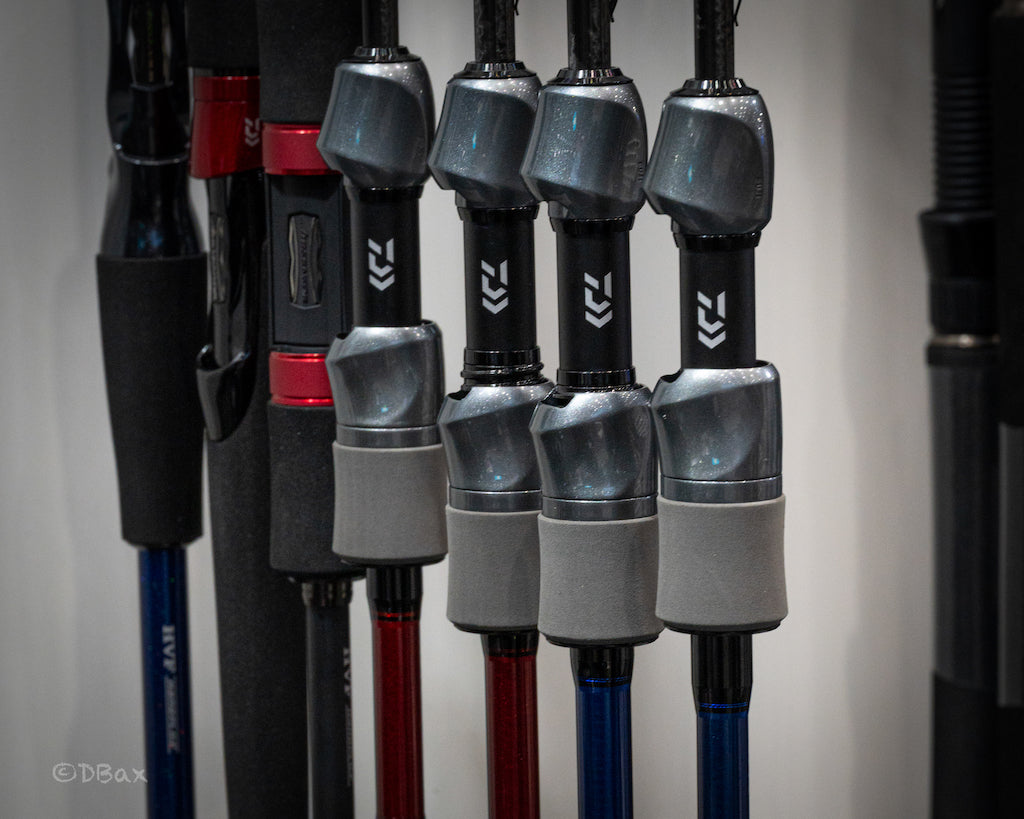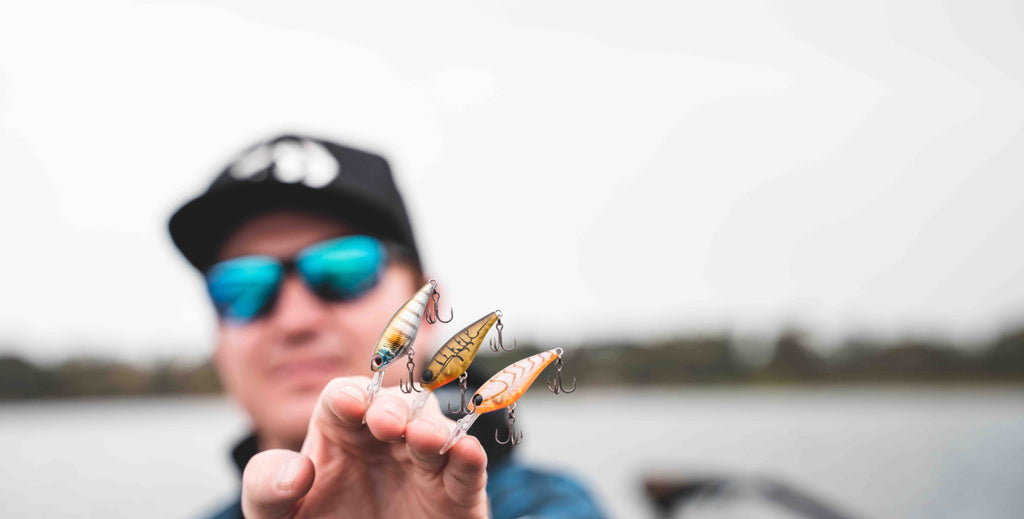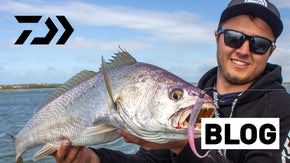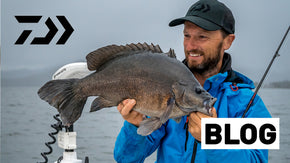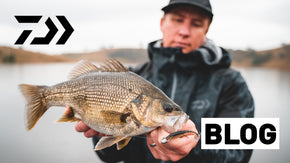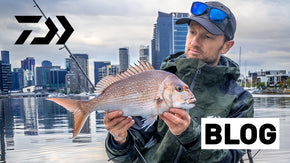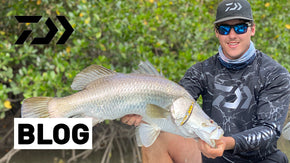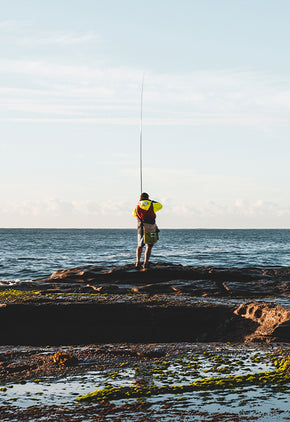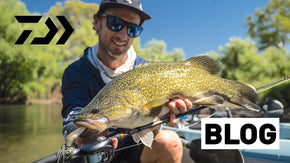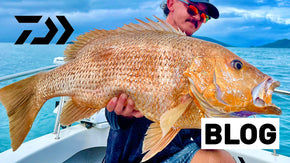Posted 01th December 2023
How to Catch Mulloway in the Surf


By Bob Thornton
In this pastime we call sportfishing, there are a few ‘holy grail’ feats that only a small portion of the angling community have achieved. Examples include catching a 60cm wild river bass, landing permit on fly tackle, or even hauling up an elusive broadbill swordfish from the depths.
One challenge often overlooked for being ‘too hard’, however, is catching an XOS mulloway land based. What’s ironic is that getting to a place where this is achievable is far easier on average than the other challenges mentioned above, so what’s the deal?
Chasing big mulloway land-based is not for the faint-hearted, and so often we hear about anglers going multiple sessions for not even a bite in the search for these gargantuan ghosts. Improving your understanding of XOS mulloway habits and refining your approach is the best way to approach this challenge, and in this blog we will aim to do just that. With input from an angler who regularly chases them, we can hopefully arm you with the tools you need to give it a crack yourself.
In a previous blog I covered soft plastic techniques for mulloway, however this blog will focus on how to catch mulloway in the surf and off the rocks.

The big specimens
Jewies are typically encountered in the estuaries and sheltered waters in their juvenile years when they are under a metre long. These fish will usually migrate to offshore reefs and wrecks when they reach a certain size, where they congregate in schools and feed on a range of fish, crustaceans and cephalopods.
Though big mulloway are largely offshore fish, they will venture inshore periodically, and this is when they can be targeted by land-based anglers. Joey Urquhart from the NSW North Coast belongs to the die-hard community of big jewie chasers in that area and knows they don’t come easy.
“It’s 100 percent about the challenge for me” he explains, “going for 10 trips without a bite, and then suddenly getting 10 bites in one trip – that’s what I love.”
Chasing large fish that only come close to shore occasionally is always going to be difficult, but there are environmental factors occurring year-round that can make this happen. Whether fishing a large beach gutter, headland or breakwall, most of the time you’re looking for the same things – these habitat types tend to be adjacent to one another after all.
“For me, there’s two things I look for,” Joey says, “and that’s bait or big seas, and if you can get both, you’re on a winner.”
Often times the presence of one of these factors can negate the need for the other, and this is where local knowledge and an understanding of these fish comes in.
“During the winter months big seas aren’t necessary, because that’s when our mullet run happens,” he explains, “and most of my fishing during the run is at night.”
The mullet run Joey is talking about is an annual phenomenon that occurs along the East Coast, where spawning sea mullet school along beaches and estuary mouths for spawning. Usually this is at its height from late autumn to mid-winter. Similar runs are known to happen along our South Coast through autumn, and along the Southwest Coast in WA at a similar time to the East Coast.
“Outside that, December, January and February see big floods and big seas in my area,” Joey says, “and with that turbulence they’re there again, because bait that was upriver is getting pushed out to sea.”
“Even without a river flood, I prefer to chase them when the conditions are rubbish,” he chuckles, “and there’s usually no one else out there when the swell is up.”
As you can see, turbulence and white water is an attractant for these fish, most likely because these conditions allow predators like mulloway to hide in little pockets and ambush any disorientated prey.
“White water is what you’re looking for,” Joey explains, “I like there to be a sand bar present, but it doesn’t necessarily need to be deep, because you want it to break.”
Time and tide also play a role, and although the best times and tides vary depending which angler you ask, there are a few things most can agree on.
“Most of the time [when it’s not rough] you want a tide change at night,” Joey says, “I like a high tide at about 9pm, and the first of the run-out is often when I get bit as those mullet are getting pushed back out.”
“If it’s rough or you’ve got floodwater,” he goes on, “I find you can catch them day and night.”
“90 percent of my jewies come from within hour of a tide change, but they will sometimes break this rule,” he adds, “Jewies obviously don’t have watches, but they can feel when the current is speeding up or slowing down.”
“When it’s flooding or super rough the tides can be all over the show and bait will still be pumping out even midway through the tide,” he explains, “if they’re hungry and there’s bait there, they’re gonna eat!

Lures and baits
Selecting lures for trophy jewies land-based is straight forward. Chasing large fish that go after large prey means using large lures, and Joey – along with many other diehards – uses just two lure types for his jewies.
“My main lures are big shallow-diving hardbodies,” he explains, “something about 190-200mm long that dives to that 2-5-foot mark.”
“The other is big soft plastics,” he goes on, “and Bait Junkie 6.2” Minnows are great for working the entire water column.”
Even with only two lures types Joey is able to achieve maximum utility, and his approach to when, where and how he uses them is one of the secrets to his success.
“If it’s rough or flooded and I want a big fella, it’s gonna be hardbodies every time,” he says, “If it’s not so rough and you want to catch whatever jewies are there, softies are a great allrounder.”
“With that said, I like to use the hardbodies whenever the mullet run is happening,” adds, “even when it’s flat, the hardbodies seem to get the bigger bites.”
“I’ve found that in a hardbody it doesn’t matter what colour it is, so long as there’s a different colour underneath,” he continues, “solid colours don’t go so great.”
With virtually all his lure fishing for jewies, Joey opts to employ a super slow retrieve in order to imitate a dawdling mullet being swept along in the current.
Selecting baits for big jewies on the sand or rocks isn’t overly complicated either, as they will generally go after any substantial meal they can find, whether it be fish, crustacean, mollusc or other invertebrate. Live baits are favoured in this community, as they deter ‘pickers’ from destroying your bait and encourage enquiries from big mulloway. Dead baits work as well, but you may need to filter through stringrays, crabs and other undesirables before a big jewie comes along.
“A legal live tailor, yakka or squid bait is absolutely dynamite,” Joey says, “and the idea is to have something big – some anglers will use big arrow squid up to a foot long!”
“Large live mullet also make great baits, of course,” he adds, “as that’s what they’re eating through winter.”
Large live baits are favoured not just for their tendency to attract large fish, but also because smaller baits will die quicker. Australian salmon up to a kilo are a great option in more southern waters where a large, hardy live bait is required in punishing swell.
It’s also worth mentioning that whole live beachworms bunched up over the rig are a very productive bait in the surf, and a great option if gathering fish or squid baits proves too difficult.
Anglers using bait like to use as little weight as they can get away with, as the idea is to have a bait that moves naturally in any current, wash or side-sweep. Keeping an eye on your bait’s movements is a good idea, and you may even need to re-cast a few times if it gets washed out of the ‘zone.’

Tackling the big ones
The tackle required for this style of fishing is quite specific and investing in quality is a good idea if you want to be able to fish this terrain effectively. Long, powerful rods, hard-wearing spin reels with a solid drag and good quality lines are needed to stand up to the punishment that this pursuit dishes out.
“I use the current Sensor Surf in the 12ft heavy 10-20kg model,” he explains, “it’s hands down the best all-round rod I’ve used for this.”
“On that I fish either a 14000 BG MQ or 14000 Maverick,” he goes on, “to be honest the [more affordable] BG MQ gets job done just fine.”
“I run 50lb J-braid Expedition on both reels,” he says, “if you go too heavy you’ll kill your casting distance.”
“You can go down to 30lb,” he adds, “but I like heavier line around the rocks.”
“For leader I’m usually running 60lb Saltiga Fluoro, and I do find the Saltiga stuff bang on, because it’s tough!”
Tackle for bait fishing should be similar, with long, fast-taper rods and strong metal bodied reels needed to survive the harsh environment. One difference is the preference for monofilament mainline. Given that free-swimming live baits can often swim near or right into highly abrasive surfaces and considering casting distance is not as important as it is when searching with lures, a strong Nylon makes the most sense. J-Thread Nylon in 20, 25 or 30lb is perfect off the beach, on the rocks and even on a breakwall.
Jewel in the crown
Targeting XOS mulloway from the sand or rocks is never an easy task, but there are few truly worthwhile challenges that aren’t exactly that: challenges! Even Joey who has years of experience chasing these elusive fish in sometimes excruciatingly harsh conditions has fishless trips. In fact, when asked about it he’s happy to admit he goes home empty-handed often!
“Fishless trips are the best,” he laughs, “because they’re an opportunity to learn what you need to change.”
This sort of approach is necessary to put such a complex puzzle together. The reward for such commitment and persistence is one of the true jewels in sportfishing. It’s not just the delicious white meat that these highly skilled anglers want, it’s also the satisfaction and relief that only comes after putting in hours and hours of hard work; the proof that all their research, preparation and physical effort has paid off.
Are you up for the challenge?


 Contact Us
Contact Us Blog
Blog About
About
